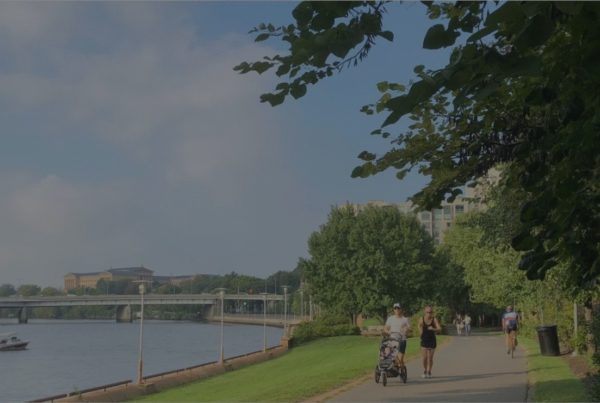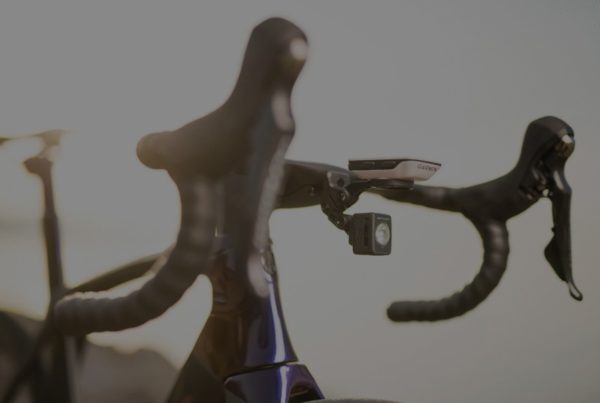By Bob Mionske
Posted Jan. 9, 2003
Legally Speaking – with Bob Mionske
Hi Bob;(
You may have followed the controversy in Colorado over center-line milling for rumble strips in mountain canyons. Bicycle Colorado is also working on this issue. My question concerns the best legal approach for local clubs and riders to take in dealing with authorities here in Jefferson County who thus far have refused hearings or public comment on this issue.
I believe the decisions reached by the commissioners may be “ultra vires” (outside of the scope of their proper authority -Ed.) to their positions. Are there legal procedures that local clubs could pursue? Would we have standing to pursue an action? Would a lawyer with municipal law expertise be required?
Bernie Greenberg(President of the Highlands Ranch Cycling Club(Highlands Ranch, Colorado
Dear Bernie;(
The Jefferson County Commissioners probably did not act ultra vires in awarding the construction contract without a full public hearing. The specific agenda item considered by the Jefferson County Commissioners at their December 17 meeting was the awarding of a construction contract for the work. The total amount of that contract was approximately $80,000.
That sort of decision is essentially a magisterial one, not involving an explicit policy consideration. Section 24-92-102(8) of the Colorado Revised Statutes (2002) requires competitive bidding only for public projects over $150,000. Thus, the only factors the County Commissioners were considering were the competence and honesty of the contractor, and these apparently were never in dispute.
This is the reason the Commissioners cut off debate. To them, it appeared as if a public group tried to say “that bridge isn’t strong enough” or “we think red centerline stripes work better than yellow.” These are technocratic, not democratic decisions. Once the professional engineers at CDOT said “we advocate this is a valid and useful safety measure” the policy aspect of the decision was over.
Bicycle Colorado may seek an injunction to try to stop the project, (see below) but the lack of a formal public hearing by JeffCo. is not a strong basis for complaint.
This does not mean that all hope is lost, however. A background explanation is in order. The federal DOT gives money to state DOT’s for transportation construction and maintenance. One such program (one of the smaller ones) is the Hazard Elimination Program (HEP). The feds dictate very involved planning and public information procedures for these funds. CDOT, for example, must annually issue a 10-year work program specifying all major roadway construction or reconstruction projects for each of the 10 years. However, the HEP is so small that it almost certainly appears in the work program as simply a box labeled “hazard reduction program” with an annual allocation. Here, the CDOT staff, having received a request from Jefferson County and an offer of local matching funds, has administratively decided to award funds for this project.
However, as you correctly point out, this small-scale “engineering” decision has significant policy implications. Centerline rumble strips are intended to prevent “lane displacement” or “lane drift” by motor vehicles on mountain roads. However, the safe vehicular use of a bicycle depends on lane displacement, especially on narrow roads; if the overtaking motor vehicle driver does not shift left, over the centerline, the cyclist could be imperiled. The active discouragement of lane displacement at all times and in all locations effectively amounts to a bicycle-use discouragement policy on mountain roads.
Here, the CDOT staff has made an administrative decision that centerline rumble strips are a safety enhancing device that qualifies for the use of HEP funds. They base this decision on their August 2001 report. (“Centerline Rumble Strips” CDOT-DTD-R-2001-8)This report does not consider the deleterious effect of such treatments on bicycle use.
Thus, my concrete recommendation is to ignore the Jefferson County Commission and go to the source of funds, CDOT. Notify CDOT that the use of HEP funds for centerline rumble strips is inappropriate because 1) The application is experimental; 2) While the treatment may (or may not) reduce motor vehicle accidents, they pose a threat to bicyclists; 3) CDOT has failed to consider these impacts in their evaluation of previously installed projects. At the same time, Bicycle Colorado should forward a similar message to the Bicycle and Pedestrian Coordinator’s office at the United States DOT to attempt to get an administrative determination on the federal level that such treatments are not eligible for HEP funds for the reasons described above.
Finally, the Colorado Administrative Procedures Act could be applied. Colo. Rev. Stat. 24-4-101.5 states that “an agency should not regulate or restrict the freedom of any person to conduct his affairs, use his property or deal with others on mutually agreeable terms unless it finds, AFTER A FULL CONSIDERATION OF THE AGENCY ACTION, that the action would benefit the public interest . . . ” In this case, argue that the CDOT staff decision to approve HEP funds for centerline rumble strip projects 1) Was not made on the basis of full consideration, and 2) Was an invalid exercise in rule making because the staff made policy without a legislative delegation of authority. (The “policy” could be explicit [it is OK to use HEP funds for centerline rumble strips] or implicit [it is OK to promote motor vehicle safety on mountain roads at the expense of cyclists’ safety]).This would be a very effective argument if a state bicycle plan or similar document could be located that states something to the effect that “all decisions of the DOT shall consider impacts on bicyclists and pedestrians in making all operational decisions” or “the safety of cyclists shall not be compromised.” In essence, the argument states “only the legislature can make policy, your ‘operational’ decision makes policy, you have no legislative authority to make this policy, and you have no history of full consideration to support your policymaking.”
In summary:(1) Going after the Jefferson County Commission is probably a lost cause.(2) Go after the source of the money, CDOT.(3) Try to get the award of the money from CDOT to Jeff.Co. invalidated.(4) Argue that CDOT has gone beyond operations and into policymaking, in violation of previous policy declarations.(5) Seek the advice of counsel familiar with Colo. Administrative law.(6) Finally, send written notice to CDOT and Jeff.Co that they are creating a dangerous condition for use as grounds in future tort litigation should a cyclist become injured and the injury be traced to the new rumble strips.
Good Luck,(
Bob Mionske(
(research assistance provided by Bruce Epperson, Law Student- Nova Southeastern University)
Bob Mionske is a former competitive cyclist who represented the U.S. at the 1988 Olympic games (where he finished fourth in the road race), the 1992 Olympics, as well as winning the 1990 National Championship Road Race.After retiring from racing in 1993 he coached the Saturn Professional Cycling team for one year before heading off to law school. Mionske’s practice is now split between personal injury work, representing professional athletes as an agent and other legal issues facing endurance athletes (traffic violations, contract, criminal charges, intellectual property etc).If you have a cycling related legal question please send it to info@bicyclelaw.com. Bob will answer as many of these questions privately as he can. He will also select a few questions each week to answer on VeloNews.com. General bicycle accident advice can be found at bicyclelaw.com.
Important Notice:
The information provided in the “Legally speaking” column is not legal advice. The information provided on this public web site is provided solely for the general interest of the visitors to this web site. The information contained in the column applies to general principles of American jurisprudence and may not reflect current legal developments or statutory changes in the various jurisdictions and therefore should not be relied upon or interpreted as legal advice. Understand that reading the information contained in this column does not mean you have established an attorney-client relationship with attorney Bob Mionske. Readers of this column should not act upon any information contained in the web site without first seeking the advice of legal counsel.
This article, Rumble Over Rumble Strips, was originally published on VeloNews on January 9, 2003.



